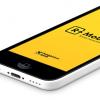1. one system design documentation: Reference manual / Borushek S.S., Volkov A.A., Efimova M.M. and others. 2nd ed. revised. and additional M.: Standards Publishing House, 1989.
2. Fedorenkov A., Kimaev A. AutoCAD 2002: practical course. M.: “DESS KOM”, 2002.
3. Guide to the design of automatic control systems: Textbook for special students. “Automation and telemechanics”/Besekersky V.A., Vlasov V.F., Gomzin V.N. and etc.; Ed. V.A. Besekersky. M.: Higher School, 1983.
4. Klyuev A.S., Glazov B.V., Dubrovsky A.Kh., Klyuev A.A. Design of technological process automation systems: Reference manual / Ed. A.S.Klyueva.2nd ed. revised and supplemented by M.: Energoatomizdat, 1990.
5. Installation of measuring instruments and automation: Directory / Alekseev K.A., Antipin V.S., Ganashek A.L. and etc.; Ed. A.S. Klyuev. 3rd ed., revised. and additional M.: Energoatomizdat, 1988.
6. Chistyakov S.F., Chistyakov V.S. Installation of measuring instruments and automation of heat and power processes at power plants. M.: Energoatomizdat, 1987.
7. Shuvalov V.V., Ogadzhanov G.A., Golubyatnikov V.A.. Automation production processes in the chemical industry. M.: Chemistry, 1991.480 p.
APPLICATION
Table A1.1
Failure rates by .
| Product name | Failure rate, 10 -6 1/h | ||
| maximum | average | minimum | |
| Autopilots Accelerometers Ring shock absorbers Batteries: disposable (dry) acid-lead Leads: high-frequency electric Rectifiers: various selenium Gyroscopes: high-speed compass high-current Single contact sockets Recording heads (magnetic) Motors: asynchronous hydraulic synchronous stepper Diodes: germanium silicon high-power Low-frequency chokes Cables Inductors | 30,11 7,5 0,057 12,1 4,22 0,08 0,75 1,6 11,45 0,02 0,26 11,2 7,15 6,25 0,71 0,678 0,452 1,58 0,280 2,2 0,031 | 18,38 2,5 0,037 30,00 1,1 2,63 0,045 0,6 0,76 7,5 3,82 10,00 0,01 0,18 8,6 4,3 0,359 0,37 0,157 0,2 1,0 0,175 0,475 0,02 | 7,35 0,35 0,002 10,00 0,5 1,131 0,02 0,20 0,26 3,95 2,5 0,002 0,13 4,49 1,45 0,159 0,22 0,002 0,021 0,012 0,070 0,002 0,01 |
Continuation of the table. P1.1
| Capacitors: paper up to 600 V paper over 600 V air variable ceramic ceramic variable mica tantalum electrolytic Connecting boxes Mounting fasteners Quartz crystals Crystal holders Electronic lamp panels Switches: push-button waveguide microminiature locking Potentiometers: miniature wire-wound (20 kOhm) Wire-wire fuses Drives: tracking systems general purpose, large-sized general purpose, small-sized belt Gaskets: rubber washers Connectors: banana plug coaxial plug Resistors: carbon composite composite variable metal film wire variable | 0,04 0,235 0,082 0,213 0,35 0,132 1,934 0,513 0,58 0,55 0,6 0,1 0,009 0,11 0,71 0,5 1,0 2,0 2,04 0,83 33,6 18,5 9,6 15.0 0,015 0,03 15.1 0,193 0,297 0,533 0,400 0,165 0,807 | 0,025 0,09 0,034 0,1 0,155 0,075 0,6 0,035 0,4 0,012 0,03 0,02 0,005 0,7 0,48 0,25 0,5 1,2 1,23 0,5 12,5 6,9 3,6 3,875 0,001 0,02 0,062 0,003 0,043 0,053 0,040 0,087 0,09 | 0,01 0,0083 0,013 0,063 0,008 0,005 0,103 0,003 0,23 0,003 0,025 0,01 0,002 0,042 0,26 0,09 0,25 0,72 0,88 0,38 0,86 0,6 0,17 0,142 0,0005 0,011 0,025 0,001 0,005 0,007 0,004 0,046 0,02 |
Continuation of the table. P1.1
| Relays: electromagnetic hermetically sealed miniature thermal Servo motors Selsyns: synchronous transmissions of decisive devices Connections: flexible mechanical soldered hinged Solenoids Pulse delay circuits Tachometers Strain gauges Thermal switches Transistors: germanium silicon Transformers: anode audio frequency pulsed filament power Electronic tubes: receiving and amplifying miniature powerful subminiature lawns full generator pulse | 0,500 0,190 0,25 1,00 5,61 0,61 1,14 1,348 1,96 0,005 4,0 0,55 0,96 0,55 15,0 0,261 1,91 1,44 0,052 0,04 0,235 0,06 2,08 2,60 15,00 13,5 4,31 6,50 43,00 | 0,300 0,040 0,06 0,4 1,51 0,35 1,113 0,6875 0,02 0,004 2,4 0,05 0,60 0,3 11,6 0,161 0,30 0,50 0,025 0,02 0,17 0,027 1,04 1,70 1,90 10,00 1,15 3,90 30,00 | 0,110 0,020 0,03 0,12 0,101 0,09 0,29 0,027 0,011 0,0002 0,80 0,036 0,24 0,25 1,01 0,114 0,04 0,27 0,012 0,01 0,03 0,012 0,46 1,10 0,55 5,80 0,36 2,70 20,00 |
End of table. P1.1
| Failure rates in accordance with Appendix 3 of GOST 12.1.004-91 and industry standard RTM 26-09-10-81 "Reliability of chemical and petroleum engineering products. Numerical values of product reliability indicators. VNIIRTmash" | |||
| Flange connections (gaskets) Pressure gauges Vessels (reservoirs) Filters Shut-off valves Pneumatic control valve Safety valve Solenoid valve Reducing valves Check valves Lifting and transport mechanism Magnetic starter Float level gauge Heat exchanger Ball valves Pipelines Flexible hoses Flexible hoses high pressure Asynchronous electric motor KSP-4 device Pneumatic devices "Center" Oxygen meter Residual chlorine analyzer Cables | 0,01 - 0,135 - 0,083 - 3,55 16,8 - 1,1 - 1,2 2,2 - 0,25 - 0,157 4,5 - - 0,01 - - | 0,02 1,3 0,15 0,3 1,1 7,5 6,3 30,0 1,1 6,4 2,17 5,3 4,12 1,1 0,067 3,93 8,6 0,81 0,15 - 0,02 0,017 | 0,035 - 16,0 - 0,27 - 15,98 56,0 - 13,2 - - 4,85 - 5,22 11,2 - - - - - |
Table A1.2
Correction factor values depending on exposure
mechanical factors
Table A1.3
Correction factor values k 3 depending on humidity
and ambient temperature
Table A1.4
SPECIFICATION
for instruments and automation equipment

Rice. P1.1. An example of a “Front View” drawing of a cabinet panel (for position numbers, see below in Fig. P1.6 and P1.7)

Rice. P1.2. Mnemonic diagram (front view):
1 - symbol of a centrifugal pump; 2 – latch symbol, 3 – pit symbol; 4 – panel;
5 – signal fittings ASKM, red lens; 6 – the same, green lens; 7 – the same, yellow lens

Rice. P1.3. Front view of a composite shield (example):
1-4 - shields 1–4 respectively; 5-8 - mnemonic diagrams 1-4, respectively;
9 - panel according to OST 36.13-76 type PnV-D-UHL4; 10 - PnV-1000; 11 - PnD-ShchPK-1000;
12 -PnTD-ShchPK; 13 - inserts according to OST 36.13-76 type VU-45-UHL4; 14 -WOOD-45-UHL4

Rice. P1.4. View of the internal planes of the shield Fig. P1.1 (execution example; position numbers see Fig. P1.6 and P1.7)

Rice. P1.5. Form 1 of the table of inscriptions and an example of filling it out
for the shield in Fig. P1.1

Rice. P1.6. The first sheet is form 2 of the list of components of the shield
in Fig. P1.1

Rice. P1.7. Subsequent sheet - form 2 A list of components of the shield
in Fig. P1.1

Rice. P1.8. An example of an image of the frontal plane of a shield and the layout of an assembly drawing.
| KAZAN STATE ENERGY UNIVERSITY | |||||||
| Institute of Thermal Power Engineering | |||||||
| Department ATPP | |||||||
| EXERCISE | |||||||
| FOR GRADUATE THESIS | |||||||
| in the field of training of certified specialists: | |||||||
| 657900 “AUTOMATED TECHNOLOGIES AND PRODUCTION” | |||||||
| Subject: | |||||||
| Student | AT-1-00 | ||||||
| surname, i., o. | Group | signature | |||||
| Scientific adviser | |||||||
| job title, | rank, | acting surname, | signature | ||||
| Consultant | |||||||
| job title, | rank, | acting surname, | signature | ||||
| Consultant | |||||||
| job title, | rank, | acting surname, | signature | ||||
| Head of department | |||||||
| signature, | date of, | Order number for task approval | |||||
| CONTENT OF TASK SECTIONS AND INITIAL DATA | |||||||
| ………………….. | |||||||
| LIST OF GRAPHIC MATERIAL | |||||||
| ………………….. | |||||||
| RECOMMENDED READING | |||||||
| ………………….. | |||||||
| NOTE: The assignment is bookleted together with the final work and with feedback from the supervisor and reviewers. | |||||||
Rice. P1.9. Design assignment form
| MINISTRY OF EDUCATION AND SCIENCE OF THE RUSSIAN FEDERATION FEDERAL AGENCY FOR EDUCATION KAZAN STATE ENERGY UNIVERSITY | ||||||||||||
| Institute of Thermal Power Engineering | Department ATPP | |||||||||||
| Direction 657900 | Speciality 210200 | |||||||||||
| (specialization) 210211 | ||||||||||||
| GRADUATION PROJECT | ||||||||||||
| Settlement and explanatory note | ||||||||||||
| Subject: | ||||||||||||
| Student | ||||||||||||
| group | signature | Last name I.O. | ||||||||||
| Supervisor | ||||||||||||
| job title | uch. rank | signature | Last name I.O. | |||||||||
| Head of work from the enterprise | ||||||||||||
| job title | uch. rank | signature | Last name I.O. | |||||||||
| Economic consultant | ||||||||||||
| job title | uch. rank | signature | Last name I.O. | |||||||||
| Consultant on the section “Occupational Safety and Health” | ||||||||||||
| job title | uch. rank | signature | Last name I.O. | |||||||||
| Consultant for | ||||||||||||
| job title | uch. rank | signature | Last name I.O. | |||||||||
| Standards inspector | ||||||||||||
| job title | uch. rank | signature | Last name I.O. | |||||||||
| Reviewer | ||||||||||||
| job title | uch. rank | signature | Last name I.O. | |||||||||
| “The work has been approved for protection” | ||||||||||||
| Head department | ||||||||||||
| uch. rank | signature | Last name I.O. | ||||||||||
| date | " " 2005 | |||||||||||
| KAZAN | 2005 | |||||||||||
Rice. P1.10. Title page final qualifying work
Maintaining your privacy is important to us. For this reason, we have developed a Privacy Policy that describes how we use and store your information. Please review our privacy practices and let us know if you have any questions.
Collection and use of personal information
Personal information refers to data that can be used to identify or contact a specific person. You may be asked to provide your personal information at any time when you contact us. Below are some examples of the types of personal information we may collect and how we may use such information.
What personal information do we collect:
- When you submit an application on the site, we may collect various information, including your name, telephone number, email address, etc.
How we use your personal information:
- The personal information we collect allows us to contact you and inform you about unique offers, promotions and other events and upcoming events.
- From time to time, we may use your personal information to send important notices and communications.
- We may also use personal information for internal purposes, such as conducting audits, data analysis and various research in order to improve the services we provide and provide you with recommendations regarding our services.
- If you participate in a prize draw, contest or similar promotion, we may use the information you provide to administer such programs.
Disclosure of information to third parties
We do not disclose the information received from you to third parties.
Exceptions:
- If necessary, in accordance with the law, judicial procedure, in legal proceedings, and/or based on public inquiries or requests from government agencies on the territory of the Russian Federation - disclose your personal information. We may also disclose information about you if we determine that such disclosure is necessary or appropriate for security, law enforcement, or other public importance purposes.
- In the event of a reorganization, merger, or sale, we may transfer the personal information we collect to the applicable successor third party.
Protection of personal information
We take precautions - including administrative, technical and physical - to protect your personal information from loss, theft, and misuse, as well as unauthorized access, disclosure, alteration and destruction.
Respecting your privacy at the company level
To ensure that your personal information is secure, we communicate privacy and security standards to our employees and strictly enforce privacy practices.
The reference book outlines the main provisions of the Unified System of Design Documentation (USKD), general rules for the execution of drawings, rules for the execution of drawings of standard mechanical engineering products, and systematizes individual rules and regulations for the development of drawings, which greatly simplifies the search for the necessary information.
Designed for designers, technologists, engineering and technical workers in mechanical and instrument engineering, as well as students of mechanical engineering specialties at universities and technical schools.
INTRODUCTION
The Unified System of Design Documentation (USDS) is the most important system of permanent technical and organizational requirements that ensure the interchange of design documentation without its re-registration between industries and individual enterprises. It allows for the expansion of unification in the design development of industrial product projects, simplification of document forms and reduction of their nomenclature, as well as graphic images, mechanized and automated creation of documentation and, most importantly, the readiness of industry to organize the production of any product at any enterprise in the shortest possible time.
In full compliance with the ESKD standards, on the basis of the “Comprehensive program for further deepening and improving cooperation and development of socialist economic integration of the CMEA member countries,” a set of CMEA ESKD standards is being developed. More than 120 CMEA ESKD standards have already been developed and implemented. The introduction of this system ensures the unity of execution and execution of design documentation for all CMEA member countries and contributes to the expansion of scientific, technical and economic cooperation.
Conducted for last years Gosstandart, together with ministries and departments, worked to standardize the rules for the development, execution and circulation of design documentation when creating new products, which made it possible, in particular, to simplify the execution of documents, eliminate the variety of forms of documentation previously existing in the country, improve its quality and information content, streamline the transfer and use of developments, which ultimately ensures increased industry readiness to organize production. The successful implementation of the ESKD showed the viability and effectiveness of the system. At the same time, in connection with the development of new design methods, it is necessary to constantly improve ESKD standards in order to apply them in operating conditions automated systems.
The Directory covers the main standards of O, 1, 3 and 4 classification groups, which designers, engineering and technical workers, as well as students of mechanical engineering specialties at universities and technical schools most often encounter in their practical work and studies. The fourth edition of the Handbook has been significantly revised and supplemented with new standards. The material is presented methodically, the requirements of the standards are linked by topic.
GENERAL PROVISIONS
The Unified System of Design Documentation is a set of state standards that establish interconnected uniform rules and regulations on the procedure for developing the design and circulation of design documentation developed and applied by organizations and enterprises of the Soviet Union.
These uniform rules apply to all types of design documents, registration, regulatory, technical and technological documentation, as well as scientific, technical and educational literature. The composition of the standards included in the ESKD is determined by the lists published State Committee USSR according to standards in in the prescribed manner.
The set of ESKD standards in the designation is assigned class 2, and all of it is placed in group T52 of the indicator “ State standards THE USSR".
ESKD standards are divided into 10 classification groups:
0 — General provisions;
1 - Basic provisions;
2 - Classification and designation of products in design documents;
3 - General rules for the execution of drawings;
4 - Rules for the execution of drawings of mechanical engineering and instrument making products;
5 — Rules for circulation of design documents (accounting, storage, duplication, amendments);
6 — Rules for the implementation of operational and repair documentation;
7 — Rules for executing schemes;
8 — Rules for the execution of construction and shipbuilding documents;
9 - Other standards.
The designation of ESKD standards is based on the classification principle. Each group can have 99 standards.
The standard number consists of the number 2 (ESKD standard class), separated by a dot from the subsequent designation; numbers after the dot (classification group of ESKD standards); a two-digit digit defining the serial number of the standard in this group, and a two-digit digit after the dash indicating the year of registration of the standard.
TYPES OF PRODUCTS
The standard establishes the types of products of all industries when carrying out design documentation. Product - an item or a set of items of production to be manufactured at the enterprise. Products, depending on their purpose, are divided into products of basic production and products auxiliary production.
A product of main production is a product intended for delivery by the manufacturer to the customer (consumer).
An auxiliary production product is a product intended only for the own needs of the enterprise producing it.
Products intended for delivery (sale) and at the same time used for their own needs by the enterprise that manufactures them should be classified as products of main production.
Four types of products are installed: parts - shaft, bushing, wheel, etc.; assembly units - machine, bearing; complexes - automatic line, motor ship; kits - spare parts for the machine, etc. The parts do not have component parts. Assembly units, complexes and kits have components (Fig. 1), the list of which depends on the specific product. In relation to the implementation of design documents, products are divided into specified - assembly units, complexes and kits and unspecified - parts. A part is a product manufactured by an enterprise from a material that is homogeneous in name and brand without the use of assembly operations.
The part can be manufactured using connecting operations (local soldering, welding, gluing, stitching, etc.) and/or have a protective or decorative coating (chrome-plated screw; tube soldered or welded from one piece of sheet material; box, glued from one piece of cardboard).
Assembly unit is a product whose components are to be connected to each other at the manufacturing plant by assembly operations (screwing, joining, riveting, welding, soldering, crimping, flaring, gluing, stitching, laying, etc.).
If necessary, assembly units also include:
1) products for which the design provides for their disassembly into component parts by the manufacturer, for example, for ease of packaging and transportation;
2) a set of assembly units and (or) parts that have something in common functional purpose and jointly installed at the manufacturer in another assembly unit, for example, electrical equipment of a machine; set of components of a mortise lock (lock, striker plate, keys);
3) a set of assembly units and (or) parts that have a common functional purpose, together placed at the manufacturer in packaging means (case, box, etc.), which are intended to be used together with the products placed in them, for example, a cooking utensil, set of end plane-parallel length measures.
Complex - two or more specified products for interrelated purposes, not connected at the manufacturing plant by assembly operations, but intended to perform interrelated operational functions. Each of these specified products included in the complex serves to perform one or more basic functions established for the entire complex. For example: automatic workshop, automatic plant, etc.
The complex, in addition to products that perform basic functions, may include parts, assembly units and kits designed to perform auxiliary functions, for example, parts and assembly units intended for installation of the complex at the site of its operation; a set of spare parts, styling aids, containers, etc.
Set - two or more products that are not connected at the manufacturer by assembly operations and represent a set of products that have a general operational purpose of an auxiliary nature (a set of spare parts, a set of tools and accessories, a set of measuring equipment, a set of packaging containers, etc.). Kits also include assembly units or parts supplied together with a set of other assembly units and (or) parts designed to perform auxiliary functions during the operation of this assembly unit or part (oscilloscope complete with a storage box, spare parts, installation tools, replacement parts).
TYPES AND COMPLETENESS OF DESIGN DOCUMENTS
Types of design documents
Design documents (hereinafter referred to as documents) include graphic and text documents that, individually or collectively, determine the composition and design of the product, contain the necessary data for its development or manufacture, control, acceptance, operation and repair. Graphic documents include drawings and diagrams, text documents include specifications and maps. technical level, statement of specifications, etc.
Documents, depending on the stage of development, are divided into design (technical proposal, preliminary design, technical design) and working (working documentation).
Depending on the nature of execution and their use, documents are of the following types: originals, originals, duplicates, copies.
An original is a document made on any material and intended for making originals from it. An original is a document executed with authentic established signatures and made on any material that allows multiple reproduction of copies from it. It is allowed to use as an original an original, a reprographic copy or a copy of a document published by printing, endorsed by the original signatures of the persons who developed it. this document and those responsible for regulatory control.
A duplicate is a copy of the original that ensures the identical reproduction of the original made on any material that allows copies to be made from it.
A copy is a document made in a way that ensures its identity with the original (duplicate), and is intended for direct use in the development, production, operation and repair of products. Copies are also microfilm copies obtained from a microfilm duplicate.
Documents intended for one-time use in production (documents of a layout, stands for laboratory work, etc.) may be executed in the form of draft design documents. The rules for executing draft design documents should not differ from the rules for executing working design documents, with the exception of the following:
1) documents can only exist in originals;
2) documents can be designated according to a system different from the designation of working design documents;
3) documents, if necessary, may contain various kinds of technological explanations;
4) in documents it is allowed not to indicate the mass of the product and its components;
5) documents do not indicate lettering;
6) changes are made to the documents in any manner accepted by the developing enterprise.
Sketch design documents differ from sketches.
A sketch is a sketch on paper of a product or process with related explanations. Sketches are usually done by hand and are not design documents. However, when performing sketches, you must adhere to general rules execution of design documents and especially the rules for executing drawings for their unambiguous understanding.
Rules for the execution and circulation of draft documents must be reflected in industry and enterprise standards.
Completeness of design documents
When determining the completeness of design documents for a product, a distinction is made between: the main design document, the main set of documents, and the complete set of documents.
The main design documents are: detail drawing - for parts; specification - for assembly units, complexes and kits.
The main set of design documents includes documents compiled or applied to the entire product as a whole, with the exception of the statement of operational documents (ED). The specification is included in the main set of design documents.
A complete set of product design documents consists of the following documents: the main set of design documents for this product; main sets of design documents for all components of this product, applied in accordance with their main design documents.
STAGES OF DEVELOPMENT
For design documentation of products from all industries, GOST 2.103-68 establishes the stages of development and stages of work (Table 2).
The mandatory implementation of stages and phases of development of design documentation is established by the technical specifications for development. Technical proposal - a set of design documents that must contain technical and feasibility studies for the feasibility of developing product documentation based on analysis terms of reference customer and various options possible product solutions, comparative assessment solutions taking into account the design and operational features of developed and existing products and patent research.
The technical proposal, after coordination and approval in the prescribed manner, is the basis for the development of a preliminary (technical) design. Rules for the implementation of the technical proposal - according to GOST 2.118-73.
A preliminary design is a set of design documents that must contain fundamental Constructive decisions, giving a general idea of the structure and operating principle of the product, as well as data defining the purpose, main parameters and overall dimensions of the product being developed.
The preliminary design, after coordination and approval in the prescribed manner, serves as the basis for the development of a technical project or working design documentation. Rules for the implementation of the preliminary design - according to GOST 2.119-73. Technical project - a set of design documents that must contain final technical solutions that give a complete picture of the design of the product being developed, and initial data for development working documentation.
The technical design, after coordination and approval in the prescribed manner, serves as the basis for the development of working design documentation. Rules for the implementation of the technical design - according to GOST 2.120-73. Previously developed design documents are used when developing new or modernizing manufactured products in the following cases:
1) in project documentation(technical proposal, sketch and technical projects) and working documentation of the prototype (pilot batch) - regardless of the lettering of the documents used;
2) in working documentation with the letters “O1” (“O2”), “A” and “B”, if the lettering of the document used is the same or higher.
The lettering of a complete set of design documentation is determined by the lowest of the letters specified in the documents included in the set, except for documents of purchased products. Working design documents for single-production products intended for one-time production are assigned the letter “I”.
...













